The Three Wise Monkeys Story (or are they frogs?....)
This month I have been painting a series of adorable garden ornaments - frogs! Their whimsical joy really makes me smile and I hope they do the same for you.
My favourite among them is the the frog version of the the three wise monkeys.
The Three Wise Monkeys Story
I am always rather fascinated by a motif like the three wise monkeys that has endured for so long and in so many forms. These three monkeys were first seen in a 17th century carving by Hidari Jingoro which is installed over the doorway in the Toshogu shrine in Nikko, Japan.
The three wise monkeys have appeared over the years in paintings, advertising materials, and as little statues like the one Ghandi famously possessed. You know they must represent an important message if a minimalist like Ghandi kept a memento of them. These days you can even find them in your emojis. You know - these guys…
There is something a bit special I think about art that begets art. From the writings of Confucius to carvings, to paintings to emojis. It is art doing one of its important jobs - helping us share important ideas and communicate with one another.
My children call them the peekaboo monkeys which makes sense for one monkey but not the others who are covering their ears and mouth. That’s because this little monkey isn't actually playing peekaboo, he is remembering to speak no evil. The three wise monkeys in the statue represent some of the principles in Confucius’s Code of Conduct from the Analects
"Look not at what is contrary to propriety; listen not to what is contrary to propriety; speak not what is contrary to propriety; make no movement which is contrary to propriety"
These days we shorten this idea to see no evil, hear no evil, speak no evil. Sometimes you find a fourth monkey with his arms crossed and hands tucked up into his armpits to indicate do no evil, but the most common form is just the three.
I think that there are quite a lot of people who use these monkey emojis to represent turning a blind eye or minding their own business. I never saw anything - I won’t tell! But I don't believe that it is wilful ignorance that these three monkeys represent. They remind us to be careful about what we consume, what we watch, read and listen to, and to be thoughtful about what we say.
I appreciate brevity so while ‘see no evil’ seems a good modern shortcut for the full phrase ‘look not at what is contrary to propriety’, I think we have lost some important nuance there. Maybe its just the difference between look and see, the intention and the search implied by ‘looking’. Short of hiding under a rock for the rest of your life, I’m not quite sure how you could truly live the directive to see or hear no evil.
If you have read any parenting or management books (which contain largely the same material, if we are honest) the current thinking on giving people instructions to illicit good behaviour is to tell them what you do want them to do, not tell them what you don’t want them to do. Similarly, if you have tiptoed down the woo woo path, you will be very familiar with the idea that our affirmations are best stated in the positive.
Maybe it’s just our human nature to be a bit defensive when told not to do something. Having restrictions placed on you feels disempowering and does tend to awaken the rebellious streak. But a few pointers on a good approach to follow in life is much more useful, and always welcomed by me!
So I love the story of the three wise monkeys and the idea that they represent. But for me ‘see no evil, hear no evil and speak no evil’ isn’t the most helpful life instruction. I prefer a more positive reframing. How about choose joy? Yes, those are words I am much more comfortable with. It’s an idea i return to often - I even wrote a book about it a few years ago…
Whether they be frogs or monkeys, these three wise chaps tell a story about being mindful, both about what we take in from the world and about what we put out into the world. Put another way, they remind us to choose to see, hear and speak joy, That feels good. And so in keeping with the spirit of these happy little frogs.
I created this series in my sketchbook using ink pen and watercolour. The first one was part of a challenge I participated in… want to see?
Are you on your own painting journey?
One of these might be useful…


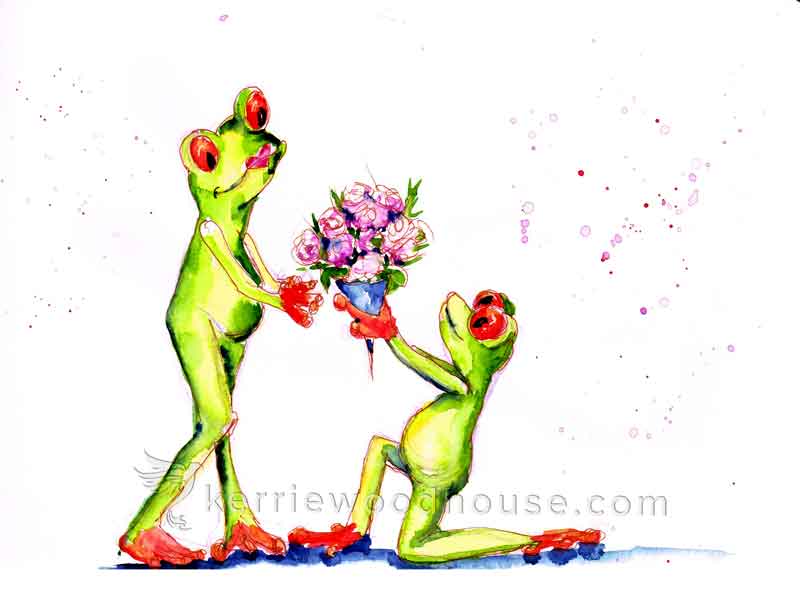

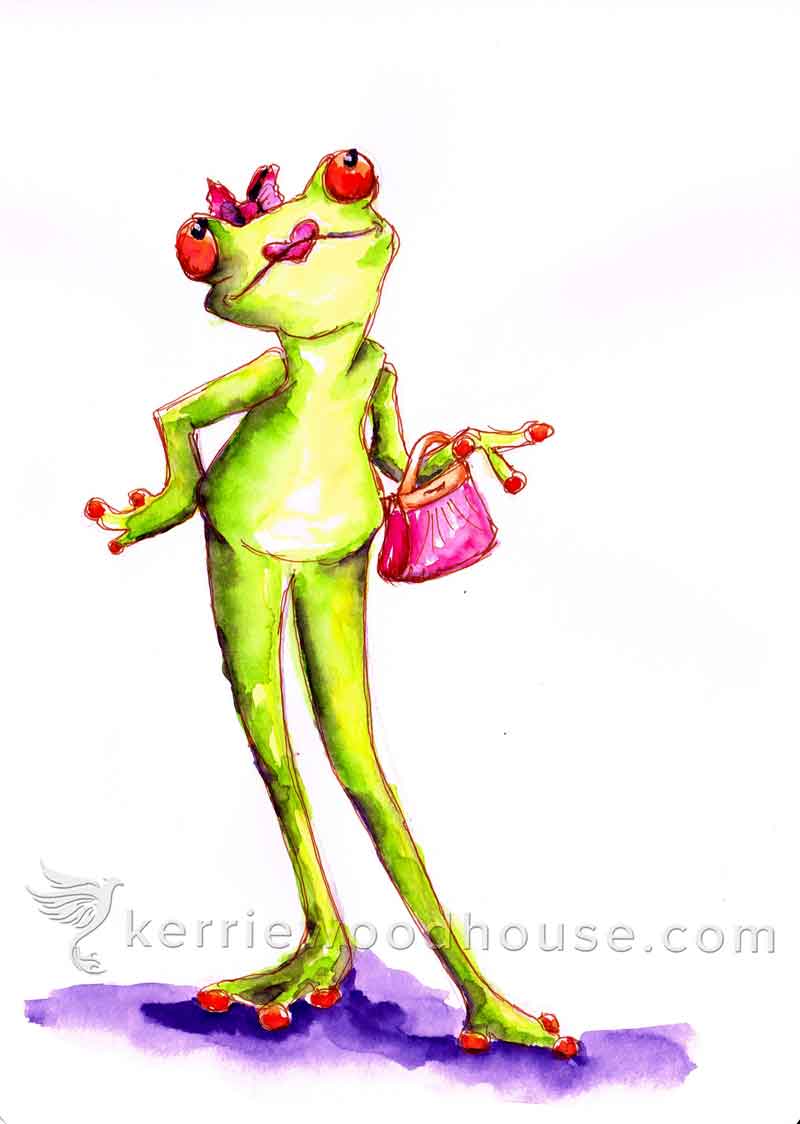
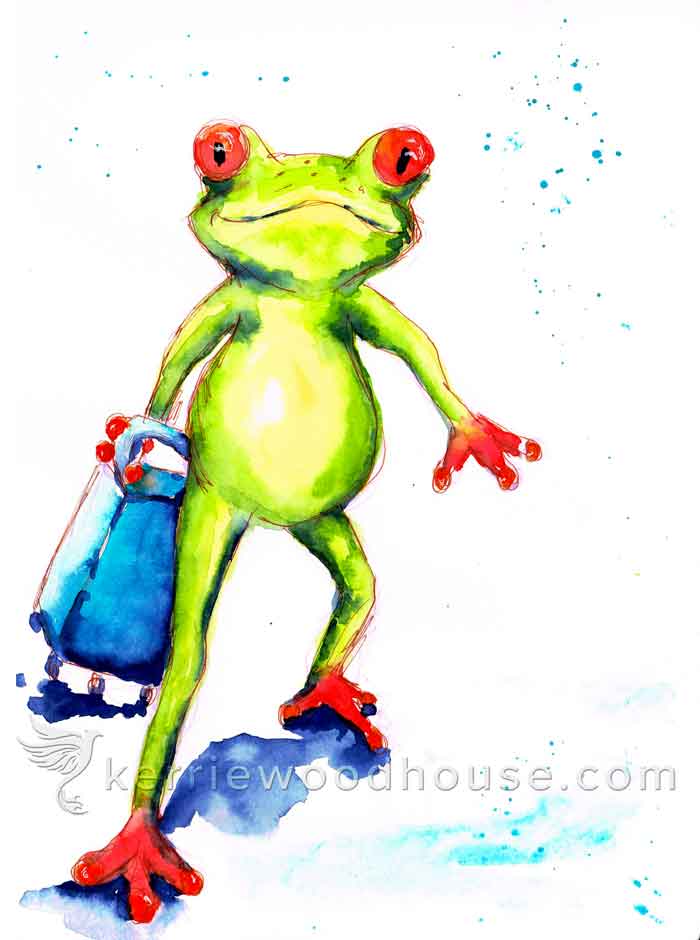
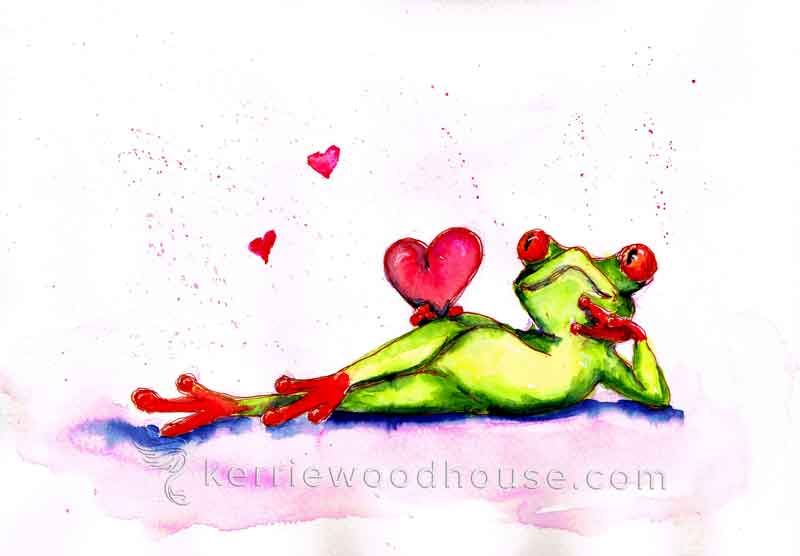
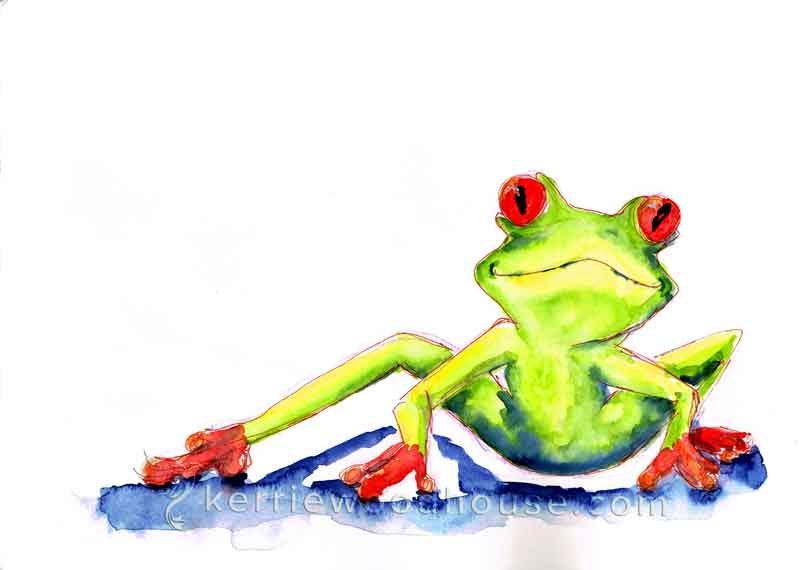
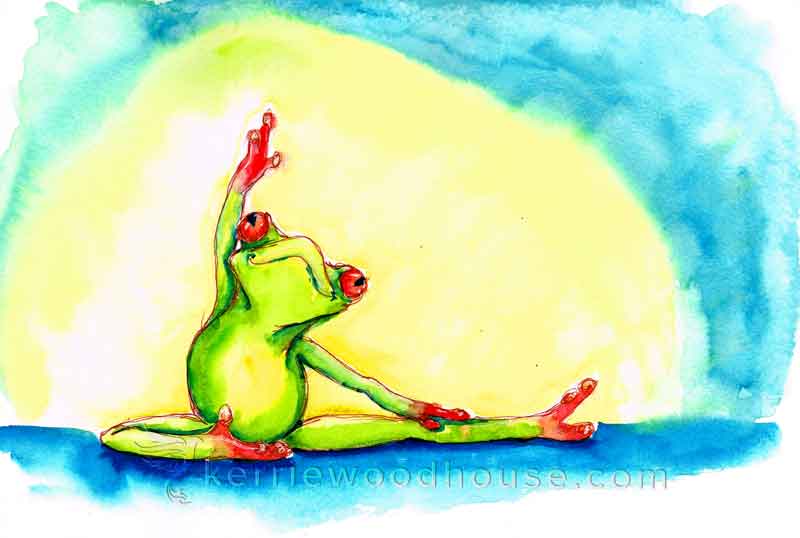
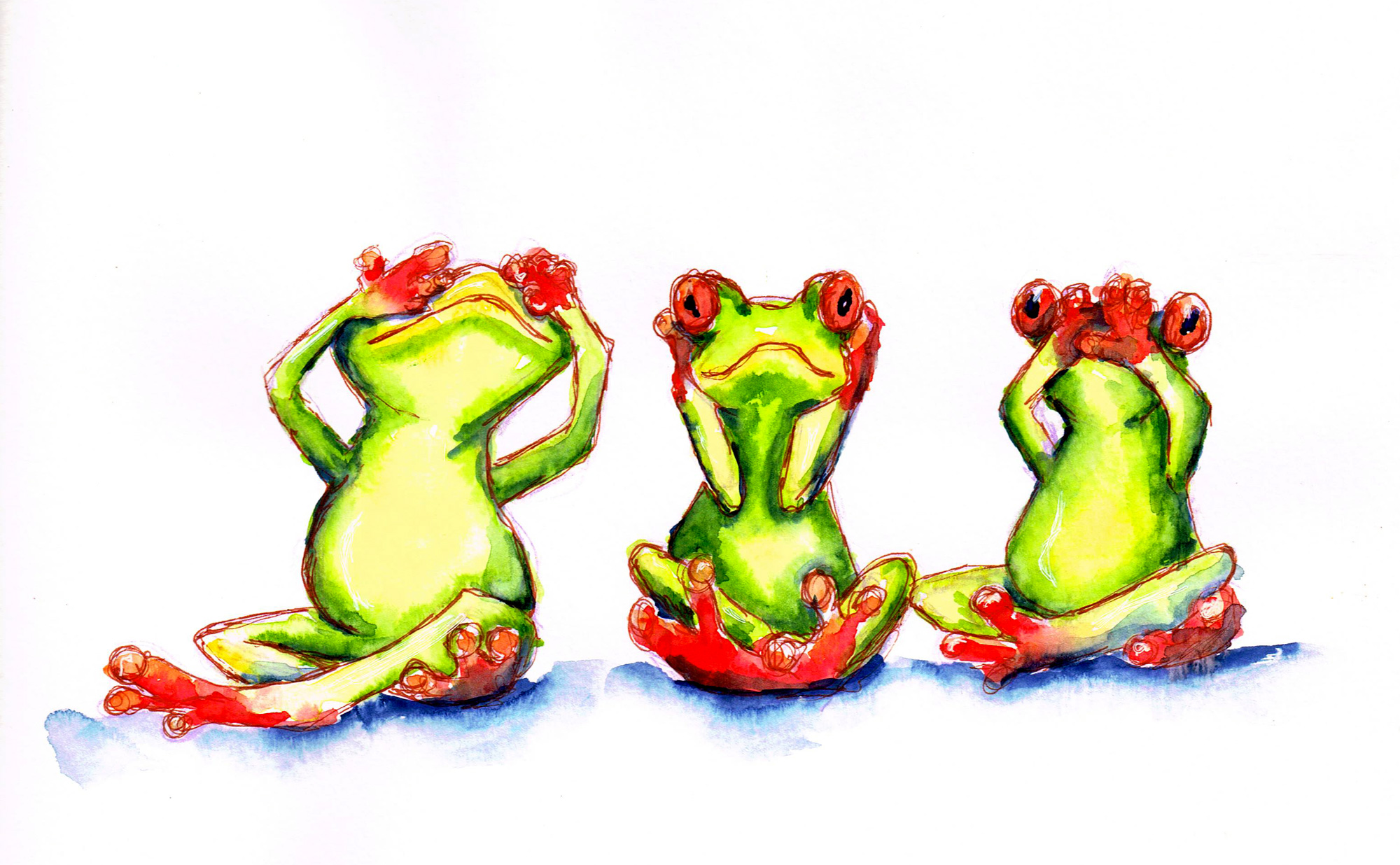
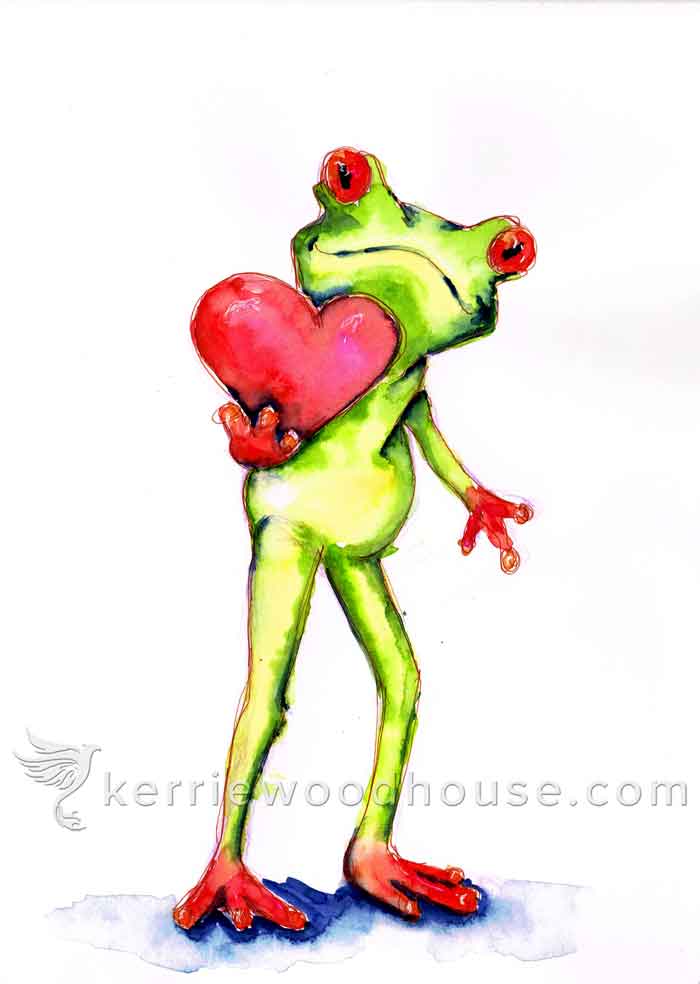





So. sketchbook, visual diary or art journal… what's the difference?
Which one should a beginner take up?
Let’s investigate and find out which one is right for you.